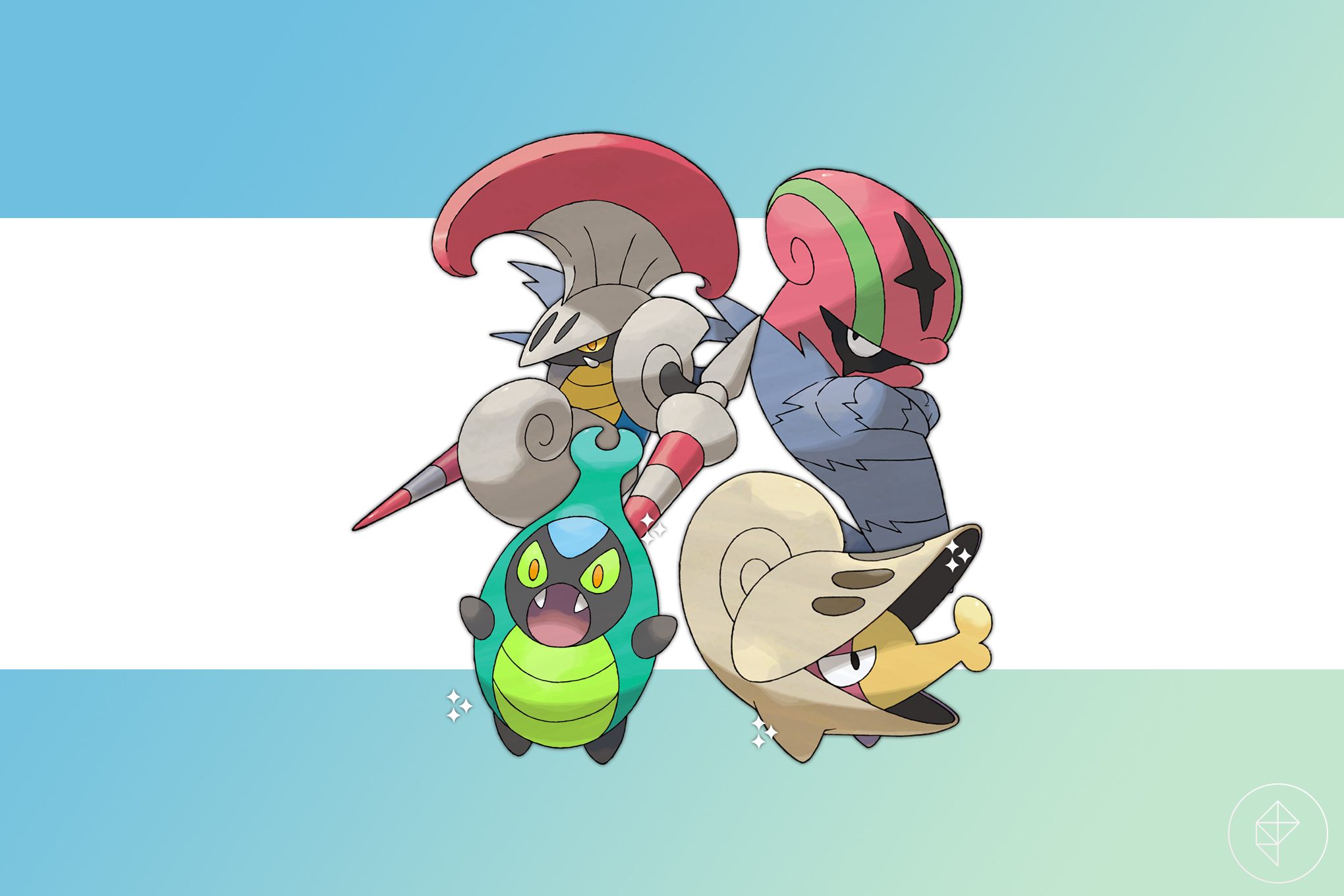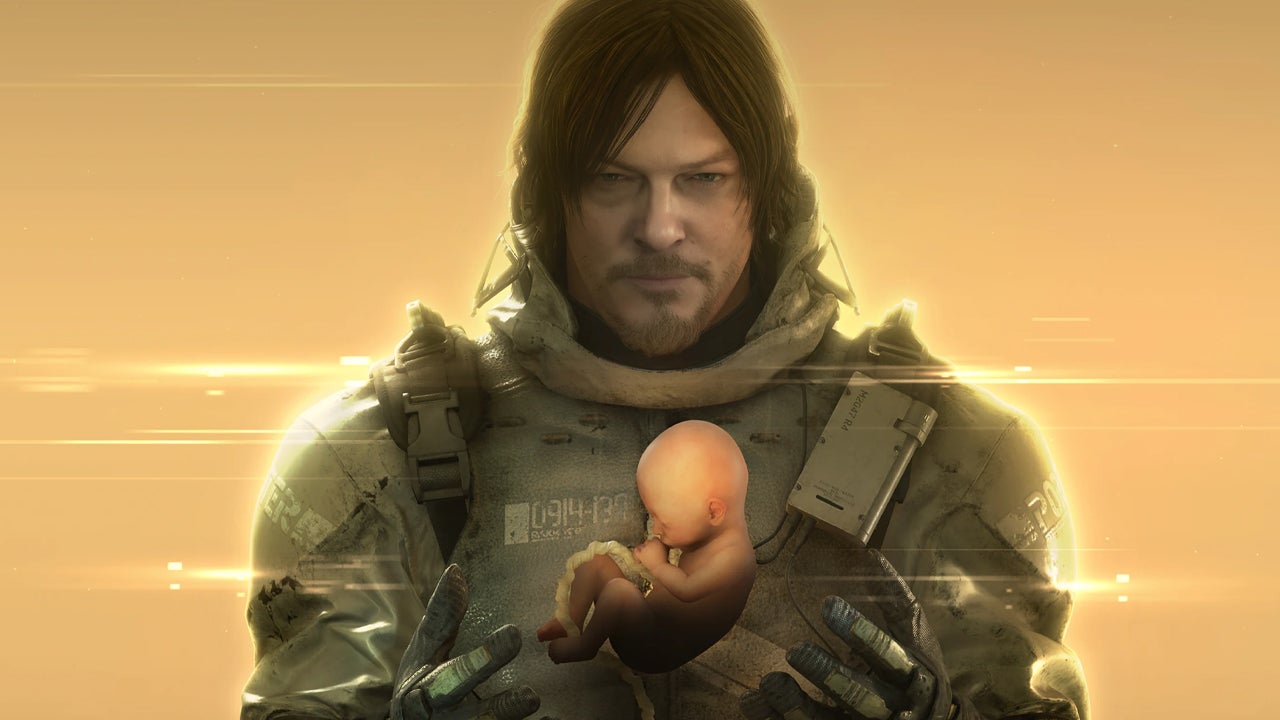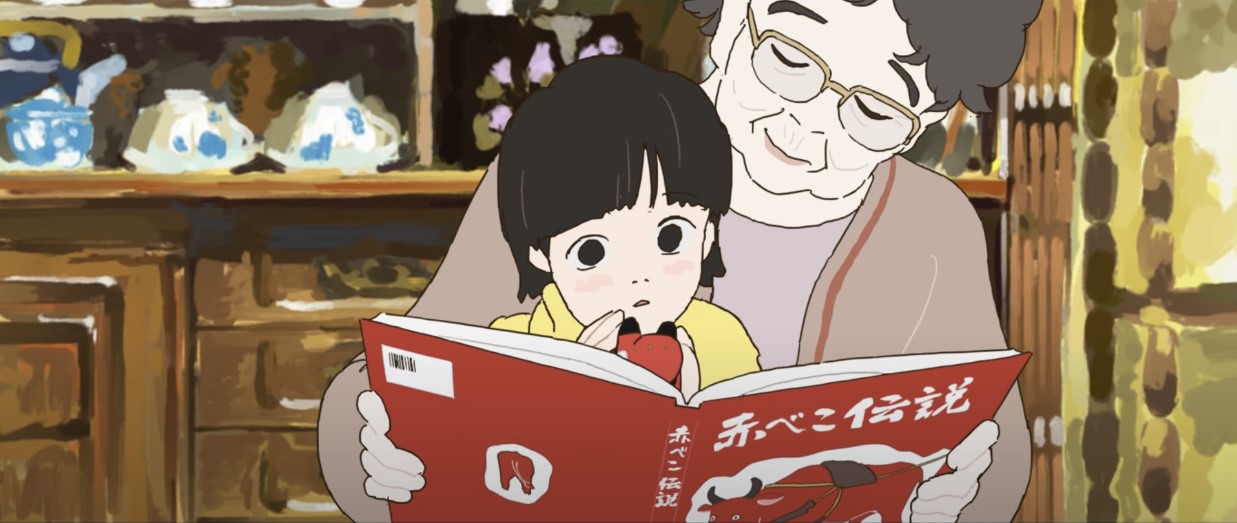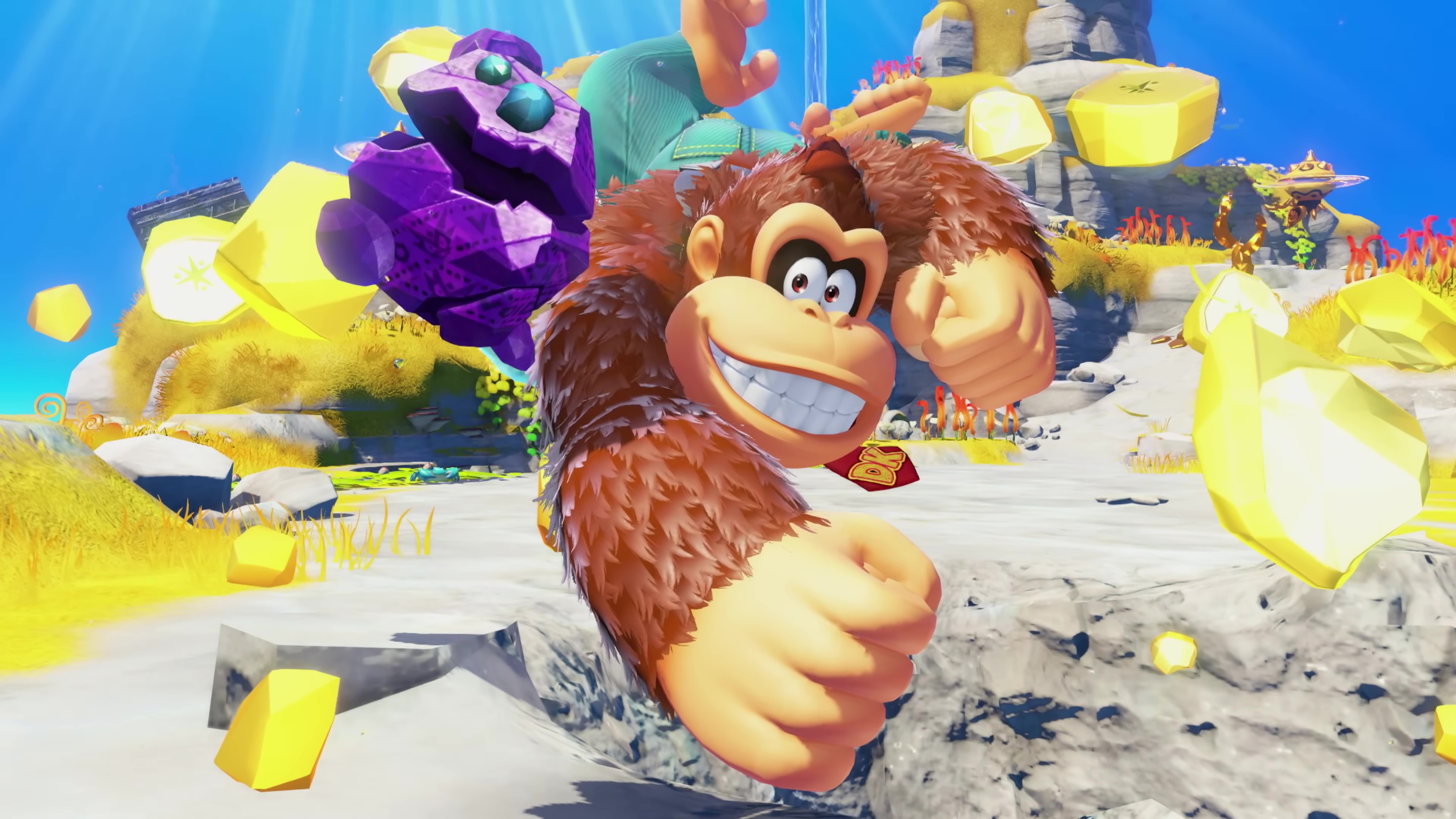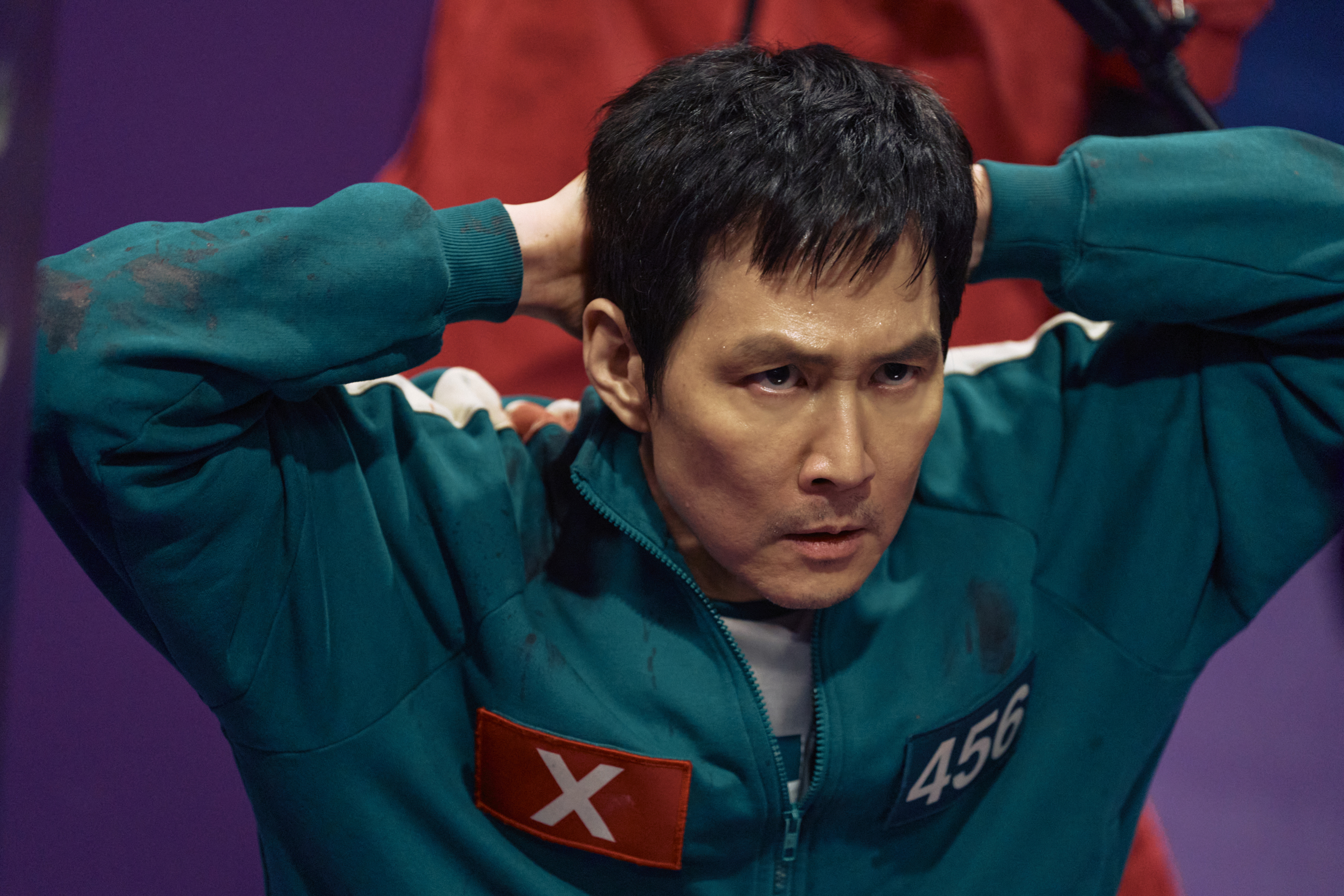
Credit the COVID-19 pandemic, social media, or turnip gambling, but as of Nintendo’s latest financial data, Animal Crossing: New Horizons is second to Mario Kart 8 Deluxe in all-time Switch software sales. At over 46 million, that’s more than 10 million above Super Smash Bros. Ultimate, The Legend of Zelda: Breath of the Wild, or any Mario platformer.
Back in 2001, few predicted this success. When the series began, it was a Japan-only Nintendo 64 life sim (Dōbutsu no Mori) designed without much thought about how it would appeal to the rest of the world, taking over a year to arrive in the U.S. and over three to reach Europe. Yet over the course of two decades, the series chipped away at audiences all over to become one of the industry’s biggest franchises.
In 2024, Boss Fight Books released a book on Animal Crossing, written by game historian Kelsey Lewin, exploring how this all began. Below, as part of Polygon’s Culture Shock special issue, we have an excerpt from that book looking at the challenges involved with localizing the original game for Western players.
The view from the Treehouse
On the surface, Animal Crossing doesn’t look like the kind of game that would make its way to the West. It’s standard for a game to tone down or change cultural references in the localization process, but the original Dōbutsu no Mori is painted especially thick with Japanese elements — so much so that even its own Japanese players might not catch all the references. For example, there is an item in the game called the Static Shirt, an indigo-and-white-colored garment worn by a couple of villagers. In Japan, this item is called Kasurinafuku, or “Kasuri Clothing,” and it’s not just a simple pattern. Kasuri is a traditional Japanese textile with origins dating back to as early as the 12th century — and as you can imagine, that’s not something every Japanese Animal Crossing fan would have known about. Similarly, the Painter’s Shirt is called Shiborizonufuku, from the traditional Japanese dyeing technique shibori dating back to the 8th century. These are obscure references, so it makes sense that they were localized out completely. But this is just the tip of the indigo-dyed iceberg.

This week on Polygon, we’re looking at how cultural differences affect media in a special issue we’re calling Culture Shock.
“I’ll never forget [producer Takashi Tezuka] coming to us and saying, ‘If we’re going to [sell the game outside of Japan], you guys have to change everything,’ because they had designed it so specifically for the Japanese market,’” said Leslie Swan, former localization department head at Nintendo who worked on Animal Crossing, in an interview for this book.
“When we first started working on Animal Crossing for N64, we really […] weren’t even thinking about having it localized […] for an international market,” said director Katusya Eguchi in a 2014 Kotaku interview. It wasn’t just a matter of changing the names of clothing. Animal Crossing is so saturated with Japanese culture — everything from holidays to little jokes in the dialogue — that translating the text would hardly scratch the surface of the work to be done. It would be the most daunting localization project that Nintendo of America had ever taken on.
Swan, alongside other prolific localization staff like Bill Trinen and Nate Bihldorff, was a key member of the secretive division of Nintendo of America known as the Treehouse. Dozens of employees, consisting of translators, writers, marketing professionals, and even video producers, work together beyond a locked, unmarked door inside Nintendo’s U.S. headquarters to bring games from Japan to the Western market. Everything they do is kept confidential, even to other Nintendo employees — and for good reason. Nintendo of America’s relationship with its Japanese headquarters relies heavily on confidentiality. These are the people who spend months vetting, translating, and rewriting new Nintendo games, often months before anyone else in the company knows it’s happening. There are times when the Treehouse may begin work on a game or project only for it to be canceled before it hits the public eye. The private offices and secretive nature of the division are especially important in those situations.
For a completely new franchise like Animal Crossing, keeping the work under wraps was crucial. Even though there were no plans to localize the game, Bill Trinen said on a 2015 IGN podcast a few people at Nintendo of America did at least take a peek at its development early on. “The initial reaction they got [from the U.S. office] was, ‘Yeah, we don’t know if we’ll launch this game in North America’ — a rare occurrence for a game from EAD,” said Trinen. And so, operating on the assumption that this game would never be localized, the development team went to work on making the game specifically for the Japanese market.
“As the game got close to being done, they said, ‘Why don’t you guys take a look at this one more time?’” Trinen continued. “And they sent the version over to us.” Unexpectedly, Trinen and his colleagues in the English translation department found the game impossible to put down.
“It turned into a fight, on who could get the cartridge first every day,” recalled Trinen. With the game’s shop only restocking once each day, the first person to play would be the only one to get whatever new tool was on sale. “Whoever gets there first gets a big up over everyone else.”

Passing the cartridge around all day and chatting about their town, they decided to write an evaluation of the game that all but insisted it should be localized for the U.S. market. “I actually came to Leslie [Swan] and said, ‘I’ll take a year, two years, myself and do this whole game. It’s that much fun,’” said Tim O’Leary, who worked on the game’s translation, in a 2014 Kotaku interview.
“Usually what happened was that the development team and our executive management would talk about the prospects for gaining success in the U.S.,” explained Swan. “We would meet with the dev team to talk about what we thought needed to be done, and they would point out everything we should be aware of.” But this was different than the “easier stuff” the small team was used to, like naming Mario enemies. Much different.
“I don’t think anybody really understood how big the project was,” Swan said. She recalled sitting in a small conference room, where producer Takashi Tezuka attempted to explain. “We really didn’t develop this with the global market in mind at all,” he told her. “It’s just… everything in it is so Japanese. It’s not just a matter of translating it for the U.S. market.”
Of course, the Nintendo 64 was nearing the end of its life cycle at this point. Nintendo of America was busy releasing the last few games it’d have a hand in — Conker’s Bad Fur Day, Mario Party 3, and Dr. Mario 64 — during the spring of 2001 when Animal Crossing made its Japanese debut. Its next console, the Nintendo GameCube, had already been announced at the previous year’s Nintendo Space World trade show, so it wouldn’t make a lot of sense to localize Animal Crossing for the Nintendo 64.
Thankfully, the team in Japan was already busy bringing the game to the next console generation. “‘Why didn’t you make this for the GameCube?!’ is a complaint we heard all the time!” said Tezuka in a 2001 Nintendo Dream interview. A Japanese GameCube version, stuffed with new features, events, and characters, was already in the works by the time Dōbutsu no Mori hit the shelves. This updated version, Dōbutsu no Mori+, is what the Treehouse team worked with, mostly arm-in-arm with the Japanese development team. “[Dōbutsu no Mori] succeeded much more than they thought it would in Japan,” Swan said in our interview, which surely played a role in the decision to embark on such a huge localization project.
The literal translation process didn’t start immediately. Those earliest days were earmarked as research time, as the team deliberated over what items or holidays would need to be added or removed to make a U.S. release feel more familiar to its audience.
“We sat in a conference room for weeks and weeks working on naming characters,” explained Swan in our interview. “We’d get these stacks and stacks of pictures, just photocopied pictures of characters and items, and we’d be like ‘Okay, let’s go name furniture sets today!’”
It’s difficult to overstate just how much work this was compared to other projects. It was the project that these Treehouse staff members continue to talk about. “[Animal Crossing] is just so vividly imprinted on my brain,” said Swan. “I would look out and see my whole staff, the entire staff was dedicated to working on it at that time. Nate Bildhorff, with his hoodie up, just working like 12 hours at his keyboard.”
“Those guys just, they all worked their tails off,” she continued. “But it was a labor of love. I mean, none of us wanted to give up on it. We loved every second of it, but man, it was long hours.”
Translating a huge amount of text was one thing, as was determining which events and items would be tweaked or changed, but the final barrier was accurately communicating these changes to the development team back in Japan. The localization team was equipped with plenty of fluent Japanese speakers, but that didn’t mean communication was flawless. Adding the barbecue grill item into the game, for instance, took a few passes of back and forth between the Treehouse and the developers. The Japanese design team wasn’t familiar with Western grills or what kinds of food they typically cooked, resulting in some interesting iterations before the team reached their kebab-grilling final design.
Impactful localization is not just about translation, removing cultural references that won’t be understood, or slapping some American items into the game. Good localization means that each part of the game will have the same effect on its Japanese audience as it does on its Western audience. A great example of this is the Oyashiro, a shrine that serves as the community center where holidays and events begin in the Japanese versions of Animal Crossing. Shrines in Japan have ceremonial importance, most notably during New Year’s when nearly everyone goes to pray during their hatsumōde, or first shrine visit of the year. In rural communities much like your little village in Animal Crossing, the shrines are small, but serve a broad community purpose. Typically, shrine visitors make a small offering of five yen when they go to pray.
“There was a certain amount of desire on both [the Japanese and American] sides to leave stuff in the game that is important to Japanese society — stuff that isn’t understood the same way here”
Leslie Swan
For Western audiences, the concept of a village shrine is alarmingly foreign. It feels ancient and oddly religious, but it’s quite normal in Japan, even for nonreligious folk. This is where a localization team steps in to determine an alternative. The shrine in Animal Crossing was replaced by a wishing well — a close Western equivalent. Wishing wells also have ancient roots, stemming from European folklore, yet still feel contemporary and commonplace. Just as shrines are still used in Japan regardless of religion, people in many Western countries still throw coins into fountains and wells as they make a wish. The intent of both locations is nearly identical — but each is more meaningful to their respective audience.
Of course, many things were completely stripped of their context in the localization process, but that doesn’t necessarily make them bad. Several clothing items, like those named for ancient dyeing techniques, received more approachable names, no longer containing any sort of ancient cultural reference. The okiagari-koboshi is a traditional Japanese doll dating back to the 14th century. It’s a wobbling toy, its weight distributed so that it returns to its upright position if knocked over; it’s considered a symbol of resilience. In Animal Crossing, the small pink doll became “Wobbelina” — a fitting but culturally meaningless name.
For some reason, all seven of the kokeshi doll items were renamed: Initially representing the female designers who worked on Animal Crossing, they were changed to names that are presumably Nintendo of America staff instead. The “Maki Figurine” is likely to be translator Maki Yamane, the “Yoko Figurine” could be Yoko Yamauchi, one of the founding employees of Nintendo of America, and so on. Unless you possess extensive knowledge of the names of Nintendo employees, it makes no difference if they are named for the game’s female designers or for assorted Nintendo of America employees. It’s an inside joke either way.
Surely one of the biggest changes to Animal Crossing in its localization is its holidays. Holidays like Children’s Day hold no meaning to a Western audience, and Groundhog Day and April Fool’s Day aren’t celebrated in Japan. Even for holidays that both cultures share, the traditions surrounding them can be quite different. In Japan, New Year’s is a time to visit Shinto shrines, purchase omikuji, a type of paper fortune at the shrine, and eat Osechi, special New Year food served in fancy boxes. In the U.S., we celebrate with a ton of noise, sparkling beverages, and fireworks, and declare our New Year’s resolutions. The holidays in each release of Animal Crossing reflect these cultural differences, although slivers of Japanese influence still poke through in the game’s international releases. In these versions, the fortune-telling panther Katrina replaces her omikuji with fortunes from “the sunshine lottery” — which serve the same purpose, but don’t sound quite so Japanese.
Some Japanese holidays weren’t outright replaced, but were washed of any real meaning. Japan’s Children’s Day is still celebrated quietly as fish-shaped windsocks called koinobori spring up around town. As a kid who was unfamiliar with Japanese customs, I always assumed the colorful decorations to be a quirk of Animal Crossing rather than a reference to a holiday. When the windsocks appear, a post on the bulletin board reads, “Spring is upon us! Flowers and warmer temperatures are a prelude to summer fun! It makes me want to fly a kite. Or a windsock. Be on the lookout for one!” The windsocks just kind of…show up. No mention of their origin.
Several villagers received cosmetic changes alongside their name changes — often little things, like fur color or eye shape — but I can safely attribute to localization only one. Jane, a gorilla villager likely inspired by ganguro fashion, shared some unfortunate similarities to blackface or “darky” iconography. Her design was entirely overhauled for Western releases, given pink skin instead of dark brown, and smaller, pinker lips. Then she disappeared forever, never to appear in another Animal Crossing game.
Localization also accounts for regional gender swaps in two characters. Gracie, known as Grace in Japan, is a self-described “fashion ‘it’ giraffe,” with famous designs known around the world. Heavily-makeuped and sporting a rather ostentatious getup, she is actually a he in Japan. The other change is in the camel character we know as Sahara, a traveling carpet salesman with feathery eyelashes who speaks in broken English. Sahara is known as Roland in Japan, and while his speech reads more “foreigner” rather than “female,” he became a lady camel in Western releases — because long eyelashes equals girl, I guess? It’s unclear if the intention of these changes was to avoid what could be considered harmful stereotypes, or to avoid the idea of having effeminate male characters altogether.
Not everything needs to be localized, even if the context of a particular item or tradition is more meaningful to the audience of its origin. Catching bugs is a common pastime in Japan, especially among young boys, so its inclusion as a core component in Animal Crossing’s gameplay feels natural and purposeful among a Japanese audience. Catching bugs may invoke feelings of nostalgia and youthfulness in a Japanese player, but they may not in an American player. It’s a distinctly Japanese pastime that, while not as familiar to a Western audience, still makes for engaging gameplay. “There was a certain amount of desire on both [the Japanese and American] sides to leave stuff in the game that is important to Japanese society — stuff that isn’t understood the same way here,” explained Leslie Swan.
Many old-world and traditional Japanese furniture items were kept, too. Entire sets, like the Mossy Garden Theme, have been present in all Western games in the series. Featuring several tōrō, or stone lanterns of different sizes, I only saw this set as something exotic and Asian-inspired when I first discovered Animal Crossing — an aesthetic to play with rather than a reflection of Japanese culture. The rare Tanabata Palm item is based on Tanabata, or Star Festival, wherein people write wishes on colorful strips of paper and tie them to the branches of a bamboo tree. The Mochi Pestle is an instrument for pounding steamed rice into the Japanese confection mochi.
Retaining cultural references exactly as they are in Japan provides unexpected, and maybe even accidental, education. Because I had seen it in Animal Crossing, the first time I visited a Japanese garden, the stone lanterns and bamboo “deer scare” felt familiar, like a distant part of my own life rather than something entirely foreign. These items are a small window into Japanese culture that feels right at home alongside Western additions like the “backyard” set of furniture. Japan has mochi pestles, the U.S. has, uh, lawn flamingos. Ah, culture.
Keeping Animal Crossing’s charm and whimsy intact for every market is the crowning achievement of the localization team, which rewrote hundreds of puns to make them applicable in English.
Perhaps the weirdest bit of Japanese culture still heavily present in the series is the Haniwa: mysterious statues that move and make noise when placed inside one’s house. Localized as “Gyroids” for their tendency to make rhythmic gyrating dance moves, the Haniwa were conceptualized by the game’s sound team, led by Kazumi Totaka. “They wanted to create something where players could add their own little musical accent through sound effects that would sync with the background music,” explained Katsuya Eguchi in an 2001 Nintendo Dream interview. They’re a bizarre, grotesque, and yet absolutely necessary presence in Animal Crossing. Each makes awkward rhythmic motions, delivering grunts, dings, croaks, and whistles to be assembled together in an uncanny orchestra. It’s a strange playground for musical and aesthetic exploration, which fits right in with the game’s “poison-y cute” style. There’s also a seemingly sentient Haniwa that acts as your save point, wiggle-dancing right outside your front door.
Real haniwa are not musical, but simply hollow sculptures made of clay. Most scholars agree that they were used to mark the perimeter of distinguished graves and protect the deceased from evil spirits. That being said, in Japan’s ancient Kofun and Yayoi periods, from roughly 300 BC to 538 AD when haniwa were popular, there was no writing system in place, so much of this history is speculative. In the game, you can only find them by digging them out of the ground, so there’s perhaps the dark implication that not only does your town sit atop an ancient burial ground, but also everyone is perfectly comfortable decorating their houses with grave markers.
And the rabbit hole goes deeper — literally. The rabbit villager Coco gets her name in most languages because of her strange, lifeless face that appears to be a coconut with a bowling-ball-looking face carved into it. But her Japanese name, Yayoi, makes it clear that she’s neither rabbit nor coconut — she’s a haniwa straight from the Yayoi period. Yep, you might be neighbors with a walking, talking funerary sculpture!
Another aspect of the original game that still made it overseas for good is feng shui. With roots in China rather than Japan, feng shui is the art of placement — a pseudoscientific set of rules for arranging objects that will “harmonize” people with their environment and facilitate the “flow of energy.” Feng shui and its variations became something of a trend in Japan and the U.S., so including the concept seemed fitting when arranging a room is a core part of the game. The Nintendo Power official Animal Crossing guidebook has a nice little explanation about it without giving much historical or cultural explanation, in a section titled, “A Furniture Force that Rhymes with Flung Clay.” The book shows which color objects you should place on which side of your house for increased luck with money or items, and which items will bring you increased luck regardless of where you plop them down. Feng shui works — you really will find rare items more often when you put yellow furniture on the left side of your house — but it’s not explicitly encouraged in the game. Your neighbors may hint at its benefits, but ultimately, it’s another dimension of culture to play with if you choose.
Keeping Animal Crossing’s charm and whimsy intact for every market is the crowning achievement of the localization team, which rewrote hundreds of puns to make them applicable in English. There’s a little quip for each bug or fish you catch, and some of them are pretty groan-worthy.
“I caught a bass! If I catch a drummer, maybe I’ll form a band!” the dialogue box reads as your character proudly holds up a freshly caught fish. This is a total rewrite of the pun used in Japan, which roughly translates to, “I caught a normal bass! I wonder if it’s just so-so.” Because the fish in question is simply called a “bass” in English rather than (what translates to) “normal bass” in Japanese, the pun wouldn’t work as a direct translation. That’s pretty common, as you can imagine, when dealing with wordplay for separate languages.

“When you start with something like that, from the translation side, you translate what’s written and then you leave a bunch of notes,” said Bill Trinen on the same IGN podcast cited earlier, speaking about preserving Animal Crossing’s humor. “So it’s like, ‘Okay, this is what it says. But this is what it really means, and it’s a pun on this, which doesn’t work in our language.’” Communicating what makes a pun work can be difficult, and not every pun hits its mark. The important thing is that the overall effect is the same, which is making sure Animal Crossing is goofy and charming throughout.
The same goes for the names of the characters, of which many are plays on words. I won’t go as far as to say they’re particularly funny, but they are definitely clever. Kaburiba, the old sow who buys and sells turnips in the game’s “stalk market,” is a masterful play on words. Kabu means both turnip and stocks, while uriba is a place (ba) where things are sold (uri). A kabu-uriba would be a place to buy turnips. Her name in North America is Joan, as in Sow Joan, a play on the U.S. stock market index Dow Jones.
It’s worth noting that while puns and “dad humor” have a reputation in the United States for being uncool and perhaps even childish, they feature strongly in Japanese humor, due to the language’s enormous number of homonyms (like kabu meaning both “turnip” and “stock”) where the intended word is inferred through context. Because it’s so easy to practically stumble into puns like that, their use is not limited to a lame type of humor only dads enjoy. So while Bill Trinen confirmed on the IGN podcast that the game’s text is equally punny and weird in both translations, what we might read as endearingly dorky in the United States isn’t necessarily interpreted that way in Japan. That being said, the concept of “dad jokes” does still exist in Japan, it’s just reserved for the especially cheesy and groan-worthy — some of the jokes in Animal Crossing probably qualify.
After all, dorkiness is everywhere in this game. It’s in the dialogue, in descriptions — it’s ingrained in Animal Crossing’s very DNA. “Welcome to my igloo! It’s so cool to have visitors in here,” quips my duck neighbor, Joey. For every normal conversation you have with a neighbor, there’s another conversation where they joke that they should start calling you “juice,” or that they’re a little bit jealous of snails. There’s even some personal touches from the localization team if you look closely: The clumsy seagull Gulliver starts to tell a joke about a duck, a cougar, and a husky, but stops himself short of telling you what “the duck says to the husky.” This entire exchange is a reference to football rivalries between Washington State University (The Cougars), University of Washington (The Huskies), and Bill Trinen’s alma mater University of Oregon (The Ducks), of which he’s an extremely vocal fan. With dialogue like that, it’s no wonder they managed to make communicating fun, no matter what language you do it in.
Source:https://www.polygon.com/animal-crossing/484661/animal-crossing-localization-book-excerpt





